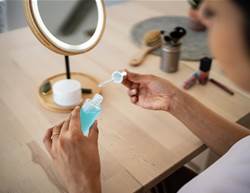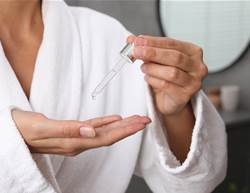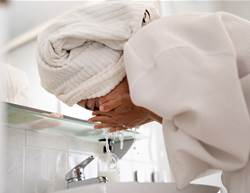Real skin rarely looks as flawless as those airbrushed ads; it’s often dehydrated, has fine lines or wrinkles, or is speckled with pigmentation and sun-damage (you know, those brown spots that suddenly appear out of nowhere!). If you’re thinking it’s time to do more than apply a bit of cream morning and night, then a facial at a spa or skin clinic is your next step. Modern facials combine potent creams with deeply penetrating treatments that can boost the quality of your skin from within. Yet with so many different treatments on offer, confusing terminology to decode and the significant financial cost to consider, it can be daunting deciding where to go and what to ask for.
Doing a little bit of homework is a good place to start, advises Dr Adam Sheridan from the Australasian College of Dermatologists. Whether that’s hitting Google with a few questions or chatting over a coffee with friends who’ve had facials recently, gather as much information as you can. “Ideally attend [a clinic] for an assessment and treatment advice from an experienced professional,” Sheridan says. “A combination approach [of treatments and topical products] is best.” Be guided also by your own knowledge of your skin’s strengths and weaknesses – you know best what you need – it might be that you want to remove redness, or it could be you’re concerned about the appearance of fine lines. “Carefully determine what your target concerns are, then work to discover the treatment specific to your primary concern. A good clinician or therapist will happily guide you in each step,” Sheridan advises. “Work from the outside in – start with textural issues, then work to clear pigment and redness, for example.” There are so many opportunities now to improve your skin without having to revert to surgical procedures. According to Sheridan, there is also a growing focus upon your total health as a driver of long term skin health. “For example, optimised diet, lifestyle and preventative and sustaining supplements,” Sheridan says. And, of course, applying sunscreen is a must. “Prevention through improved sunscreens that are pleasant to apply is your essential daily defence.”
Peels? Acid? Therapy? Needles? Having a facial can sound a bit like a surgical procedure but once you know what to expect you can match the facial to your personal needs without any worry. The result? Brighter, fresher and younger-looking skin.
Hydro Microdermabrasion
What is it: Using water jets to exfoliate, revealing smoother, more even textured skin. Benefit: Resurfaces the outer layer of skin making it easier for hydrating products to be absorbed. Gives a clearer, brighter complexion that feels soft and hydrated. Expect: It can be mildly scratchy and skin will be somewhat pink as a result. As with most resurfacing procedures, make sure you take extra care when out in the sun.
Chemical Peels
What is it: A mode of exfoliation using a chemical solution (such as glycolic or lactic acid).
Benefit: Called a peel because the acid causes the top layer of skin cells to shed, and the result is smoother-looking skin, reduction in the appearance of fi ne lines, scars, discolouration and sun damage. “The deeper the peel the more prolonged the down time and the more significant the associated risks,” explains Sheridan.
Expect: Mild tingling and, for some women, possibly stinging during treatment, depending on the strength of the peel. Skin may be red and flaky for several days after the procedure. More than one treatment may be required.
Acids
What is it: Alpha hydroxy acids (AHAs) are the chemicals used in milder peels, as are beta-hydroxy acid (BHA) and retinoic acid. A trichloracetic (TCA) acid peel is a stronger option.
Benefit: They are effective at reversing the effects of photo-ageing, improving the appearance of wrinkles, skin elasticity, tone and hydration.
Expect: Stronger peels that work deeper, can stimulate collagen production as skin is renewed.
Hyaluronic Acid
What is it: This little molecule occurs naturally in our skin and it can contain up to 1,000 times its weight in water. Our body’s production of hyaluronic acid declines as we age.
Benefit: When applied to the skin as a cosmetic ingredient, it binds water molecules together, helping skin stay hydrated and firm.
Expect: Skin will look revitalised and smoother with a reduction in fi ne lines.
Micro Needling
What is it: Also called collagen induction therapy, fi ne needles cause microscopic punctures in the skin, triggering a healing response that regenerates the skin. “A good simple option to target localised minor scarring; or to refresh the skin,” suggests Sheridan.
Benefit: The healing response has been proven effective for reducing scars, fi ne lines and wrinkles. The result is smoother, firmer, more even-looking skin.
Expect: Generally, a numbing cream is used so it shouldn’t hurt. There may be some facial redness that will disappear within hours or days.










